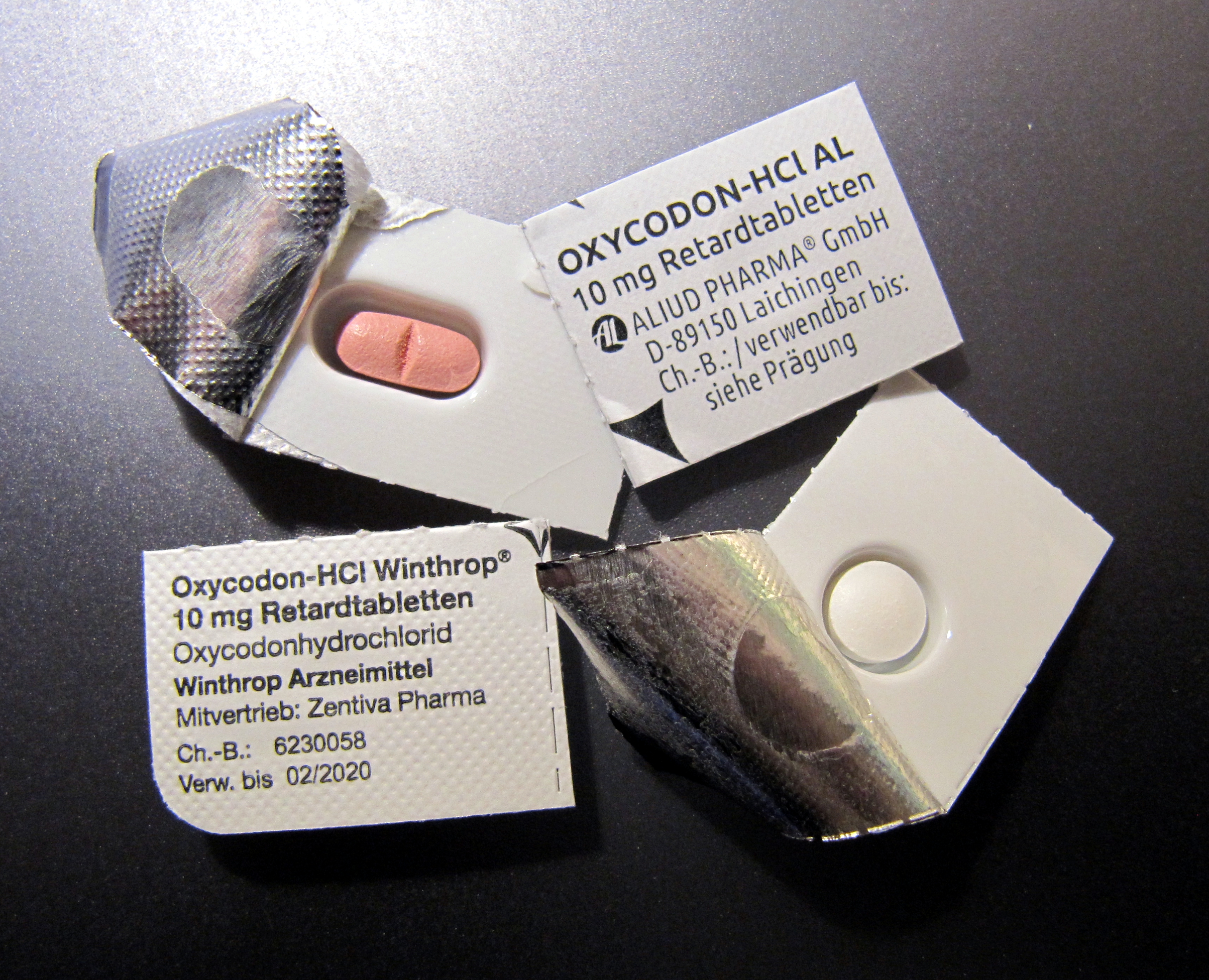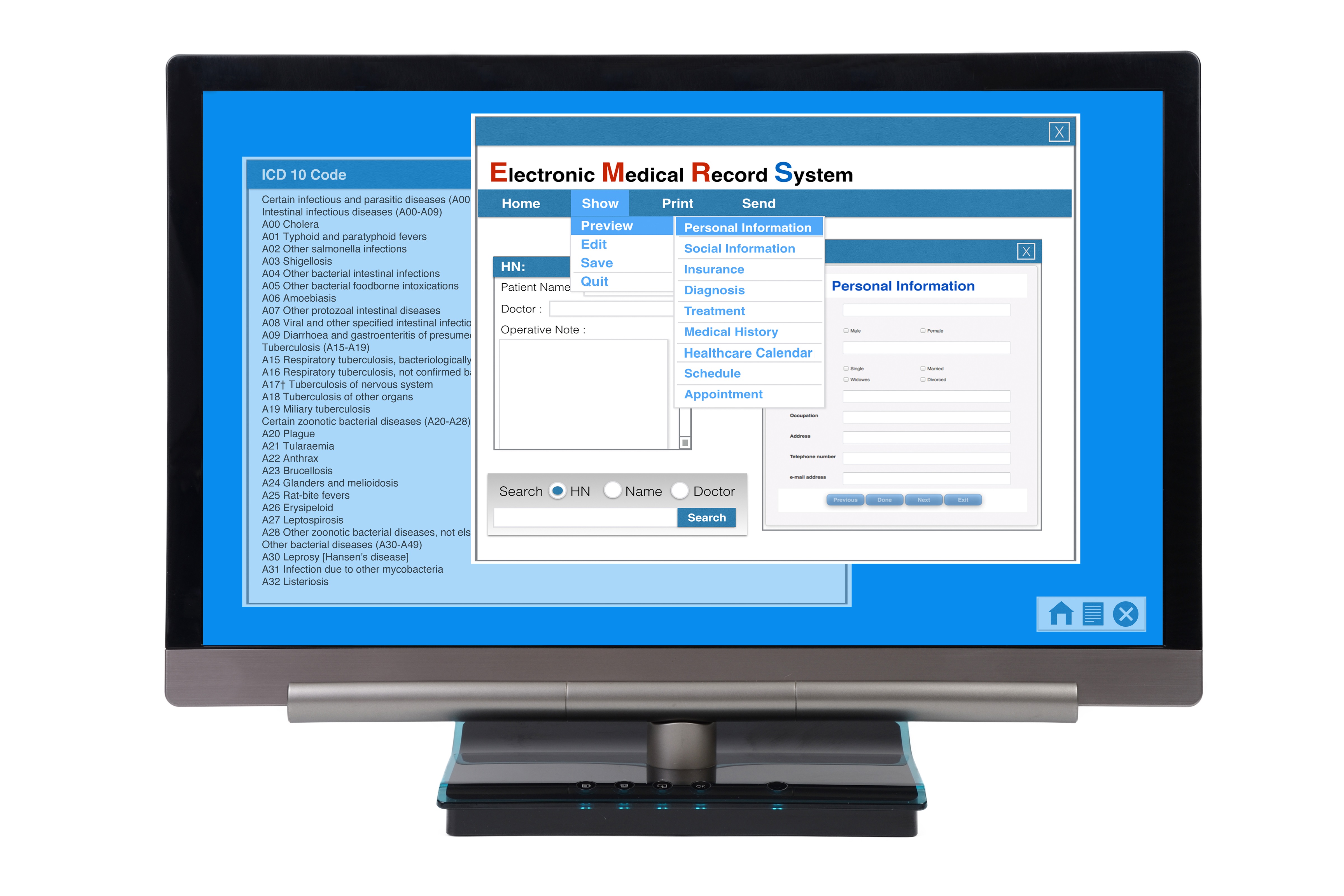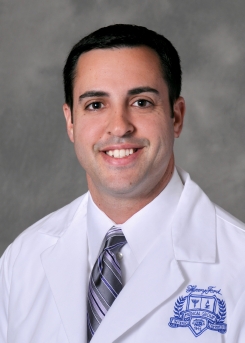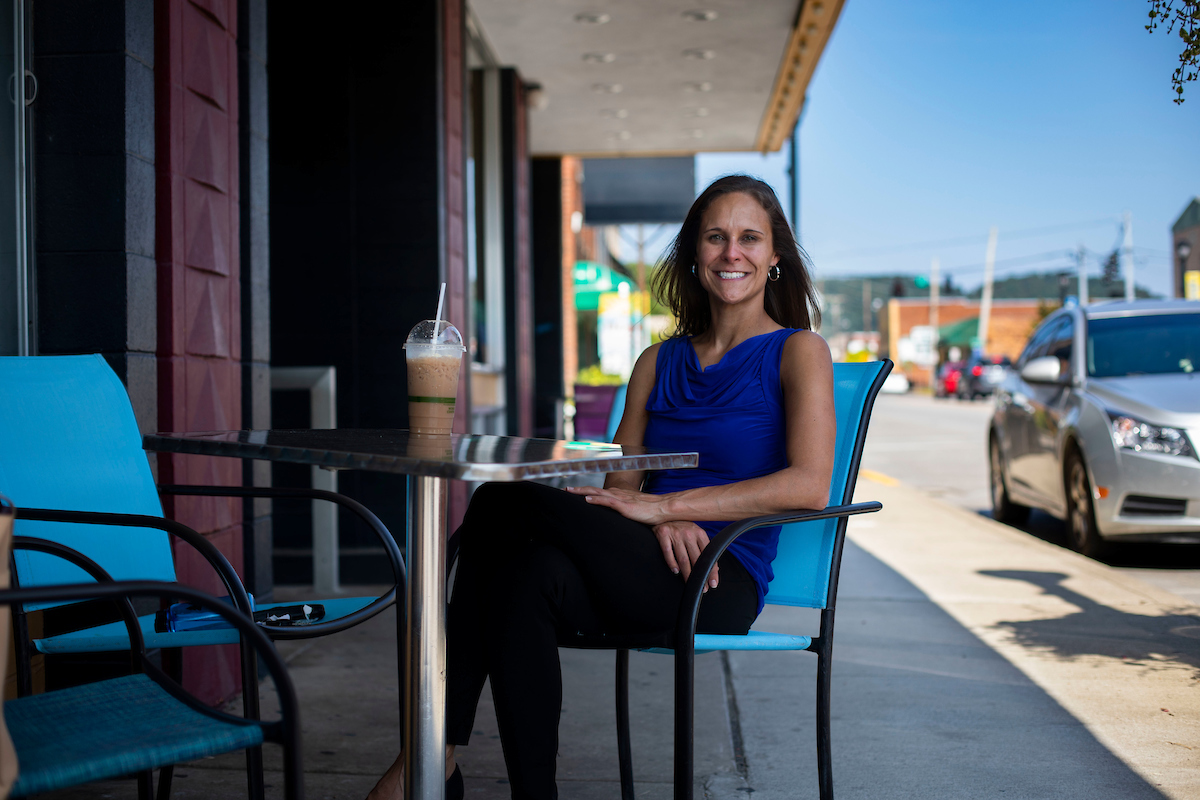The National Institutes of Health (NIH) is embarking on a massive research project to shed light on early child development, including the health and developmental implications of opioid use during pregnancy. The very first task is to ensure the study — the HEALthy Brain and Child Development study (HBCD) — is on solid legal and ethical ground.
Tag: Opioids
Emergency department visits related to opioid overdoses up significantly during COVID-19 pandemic
Emergency department visit rates because of an opioid overdose increased by 28.5% across the U.S. in 2020, compared to 2018 and 2019, recent Mayo Clinic research finds. Emergency visits overall decreased by 14% last year, while visits because of an opioid overdose increased by 10.5%. The result: Opioid overdoses were responsible for 0.32 out of 100 visits, or 1 in every 313 visits, which is up from 0.25, or 1 in every 400 visits, the previous two years.
Statement from Public Health Experts on Announcement of Opioid Settlement
Members of a coalition of 50+ leading public health groups who issued a set of five guiding principles for spending opioid settlement funds in January are reacting to the announcement of the $26 billion settlement deal between a group of state attorneys general and Cardinal Health, AmerisourceBergen, McKesson, and Johnson & Johnson.
Many surgery patients get opioid prescriptions, but many don’t need to, study suggests
Surgeons can ease their patients’ pain from common operations without prescribing opioids, and avoid the possibility of starting someone on a path to long-term use, a pair of new studies suggests.

Roswell Park Team Demonstrates Safe Approach for Dramatically Reducing Use of Opioids Following Surgery
A pain-management protocol designed by Emese Zsiros, MD, PhD, FACOG, to be reported at the American Society of Clinical Oncology 2021 annual meeting, resulted in a 45% decrease in opioids prescribed to patients undergoing surgery, without significant effect on recovery or satisfaction.
Roswell Park Researchers Gear Up for ASCO 2021 Annual Meeting
At the American Society of Clinical Oncology 2021 virtual Annual Meeting, Roswell Park teams will share data and insights on topics ranging from reducing use of opioids to an analysis of trends in response to cancer treatment among patients of different races.
AANA Joins Bipartisan Congressional Movement to Expand Use of Non-Opioid Pain Management
o help increase access to the availability of non-opioid pain management treatments, the American Association of Nurse Anesthetists (AANA) supports the recent introduction of the Non-Opioids Prevent Addiction in the Nation (NOPAIN) Act introduced by U.S. Rep. Terri Sewell (D-AL), along with Reps. David McKinley (R-WV), Ann Kuster (D-NH), and Brian Fitzpatrick (R-PA). The Senate version of this legislation (S. 589) was previously introduced.
Older Adults with Functional Impairments Linked to Prescription Drug Use/Misuse
Researchers at University of California San Diego School of Medicine found that functional impairments among adults aged 50 and older are associated with a higher risk of medical cannabis use; and prescription opioid and tranquilizer/sedative use and misuse.
Civil commitment for substance use disorder treatment – What do addiction medicine specialists think?
Amid the rising toll of opioid overdoses and deaths in the U.S., several states are considering laws enabling civil commitment for involuntary treatment of patients with substance use disorders (SUDs). Most addiction medicine physicians support civil commitment for SUD treatment – but others strongly oppose this approach, reports a survey study in Journal of Addiction Medicine, the official journal of the American Society of Addiction Medicine (ASAM). The journal is published in the Lippincott portfolio by Wolters Kluwer.
Patient support programs for painful conditions may reduce opioid use
Programs that provide ongoing support to patients with painful conditions and complex medication regimens may also help them avoid using potentially risky opioid pain medications, or reduce the amount they use, a new study finds.
Researchers Say Prescribing Opioids for Pain Relief after Knee Surgery is Unnecessary
Researchers find that opioids are not necessary for managing post-knee surgery pain.
Carrying Naloxone Can Save Lives but Newly Abstinent Opioid Users Resist
UC San Diego School of Medicine researchers report that opioid users who participated in a 12-step abstinence program and recently stopped using drugs refused to take home naloxone, even if having it on hand might save lives.
Text Message Program Shows 60 Percent of Opioid Tablets Unused After Common Procedures
A Penn Medicine new study of how text messaging could inform opioid prescribing practices showed that 60 percent of opioids are left over after orthopaedic and urologic procedures
Arkansas Society of Anesthesiologists and American Society of Anesthesiologists Applaud Arkansas Senate Public Health Committee on Passing SB 505 Giving Protection to Patients Prescribed Opioids
The Arkansas Society of Anesthesiologists (ARSA) and the American Society of Anesthesiologists (ASA) today applaud bill sponsor Sen. Cecile Bledsoe and the Arkansas Senate Public Health, Labor and Welfare Committee for helping to ensure the safety of patients prescribed opioids. Arkansas State Drug Director Kirk Lane and Jonathan Goree, M.D., a physician anesthesiologist and pain medicine specialist, testified for the bill.
Staff Dedication Key To Patient Satisfaction with Substance Use Treatment Facilities, Study Shows
Researchers at Penn Medicine used machine learning-aided analysis to uncover top positive and negative themes in patient Yelp reviews of substance use treatment facilities
More evidence is urgently needed on opioid use in Black communities
Although the prevalence of opioid use among Black people is comparatively low, the rate of opioid deaths has increased the sharpest and fastest among that population in recent years, according to an article in the March/April issue of Harvard Review of Psychiatry. The journal is published in the Lippincott portfolio by Wolters Kluwer.
A Trio That Could Spell Trouble: Many with Dementia Take Risky Combinations of Medicines
People over 65 shouldn’t take three or more medicines that act on their brain and nervous system, experts strongly warn, because the drugs can interact and raise the risk of everything from falls to overdoses to memory issues.
But a new study finds that 1 in 7 people with dementia who live outside nursing homes are taking at least three of these drugs.

Mexico’s poor have little luck obtaining opioids intended for palliative care
Despite a Mexican government initiative launched in 2015 to improve access to prescription opioids among palliative care patients, the country has seen only a marginal increase in dispensing levels, and inequities in dispensing have left many of the nation’s poorest residents without comfort in their final days
Patients on Chronic Opioids Likely to Live in Disadvantaged Neighborhoods, Have Worse Anxiety and Depression
People treated with chronic opioid therapy for pain are more likely to live in socially disadvantaged areas and self-report worse anxiety, depression and pain that interferes in their lives, according to a new study presented this week at the Association of Academic Physiatrists Annual Meeting.
Controlling pain after surgery doesn’t have to mean opioids, study shows
As surgeons balance the need to control their patients’ post-surgery pain with the risk that a routine operation could become the gateway to long-term opioid use or addiction, a new study shows the power of an approach that takes a middle way.
Patients who take opioids for pain can’t get in the door at more than half of primary care clinics
People who take opioid medications for chronic pain may have a hard time finding a new primary care clinic that will take them on as a patient if they need one, according to a new “secret shopper” study of hundreds of clinics across the country.
Coalition Releases Principles to Guide State and Local Spending of Forthcoming Opioid Litigation Settlement Funds
A coalition of 31 professional and advocacy organizations has released a set of principles aimed at guiding state and local spending of the forthcoming opioid litigation settlement funds.
Opiate Overdoses Spike in Black Philadelphians, But Drop in White Residents Since COVID-19
New research into opioid overdoses that occurred during the COVID-19 pandemic highlighted new disparities along racial lines that are likely fueled by existing inequality
Recommendations for the Overdose Epidemic in the COVID-19 Pandemic
A new report from researchers at the Johns Hopkins Bloomberg School of Public Health offers recommendations aimed at federal, state, and local policymakers to address the opioid epidemic during the pandemic.

Children’s Hospital Los Angeles Surgeon Establishes First-Ever Guidelines for Pediatric Opioid Prescribing
Dr. Lorraine Kelley-Quon forms team of health care providers and community advocates to establish recommendations for safe opioid use. According to the National Institutes of Health, opioid misuse and addiction in the United States is a national crisis, with an economic burden upwards of $78 billion. Opioids are useful for pain management following surgery and other major procedures, but until now there have been no recommendations guiding safe use of opioids in children.
Taking a scalpel to opioid painkiller risks: New surgery research shows progress and opportunities
A wave of new studies shows what happens when surgical teams work together to reduce the emphasis on, and supply of, opioid painkillers while still seeking to ease surgery patients’ pain.

Studies Show Subcutaneous Methylnaltrexone Provides Safe, Effective, and Rapid Relief of Opioid-Induced Constipation in Patients with Cancer
In a study of cancer patients treated with methylnaltrexone, about 50%–70% experienced relief from opioid-induced constipation within 4 hours without the use of additional treatments, compared with 15% of placebo-treated patients. In addition, more patients treated with methylnaltrexone maintained a response at 24 hours after dosing compared with patients treated with placebo.
Real-time opioid overdose tracking system shows rise in the time of COVID-19
An epidemic that was already raging before COVID-19 arrived has flared up in recent months, according to a real-time tracking system in Michigan. It shows a 15 percent rise in suspected opioid overdose deaths since March, compared with the same time last year, and a 29% rise in first responders’ use of the rescue drug naloxone.
University Hospitals Connor Integrative Health Network to Study Acupuncture in the ED with $2+ Million Grant
Multiple centers will study acupuncture for pain in the emergency department setting.

Opioid Use Disorder? Electronic Health Records Help Pinpoint Probable Patients
A new study suggests that patients with opioid use disorder may be identified using information available in electronic health records, even when diagnostic codes do not reflect this diagnosis. The study demonstrates the utility of proxies coding for DSM-5 criteria from medical records to generate a quantitative DSM-5 score that is associated with opioid use disorder severity. The study methods are unique in deriving a severity score that aims to mirror severity scores from more traditional interview-based diagnostic procedures.
Study shows need for balance in post-surgery opioid prescribing guidelines
New research presented at the virtual American College of Surgeons Clinical Congress 2020 reports that opioid guidelines may be missing a small group of patients that need a greater level of pain control.

One in 10 older dental patients inappropriately prescribed opioids
A new study by researchers at the University of Illinois Chicago and the University of Pittsburgh suggests that a significant proportion of older patients receiving opioids at dental visits also use psychotropic medications — a potentially harmful combination. Their findings are published in the journal Pharmacotherapy.
Apply today for press credentials to cover the virtual American College of Surgeons Clinical Congress 2020
The first-ever virtual American College of Surgeons (ACS) Clinical Congress 2020 will convene October 3-7, offering surgeons and guest clinicians both live and on-demand sessions.
Clinical Utility of Hana® Orthopedic Table Highlighted in New Study: 97% of Direct Anterior Approach Hip Replacement Patients Needed Little to No Opioid Pain Medication After Surgery
Mizuho OSI®, a leading manufacturer of specialty surgical tables and pressure injury abatement solutions would like to announce the publication of a new clinical study titled “23-hour Total Hip Replacement Requiring Only 3.5 Opioid Pills Through 6 Weeks: A Non-selected Prospective Consecutive One Year Cohort”, by Andrew Wickline MD, now appearing in the peer-reviewed Journal of Orthopedic Experience & Innovation (JournalOEI)

Opioid-Related Overdose and Death Increase during Global Pandemic
In May, ambulance data recorded a 42 percent increase in overdose-related calls, nationwide In 2019, nearly 72,000 Americans died from drug overdoses, with many involving opioids. With the emergence of the SARS-CoV-2 pandemic, many experts — including those at UC…
Chatbots Delivering Psychotherapy Help Decrease Opioid Use After Surgery
A study showed that patients receiving messages from a chatbot used a third fewer opioids after fracture surgery, and their overall pain level fell, too
Patients taking long-term opioids produce antibodies against the drugs
University of Wisconsin–Madison scientists have discovered that a majority of back-pain patients they tested who were taking opioid painkillers produced anti-opioid antibodies. These antibodies may contribute to some of the negative side effects of long-term opioid use.
Negative side effects of opioids could be coming from users’ own immune systems (video)
Opioid users can develop chronic inflammation and heightened pain sensitivity. These side effects might stem from the body’s own immune system, which can make antibodies against the drugs. The researchers will present their results at the American Chemical Society Fall 2020 Virtual Meeting & Expo.
Significantly less addictive opioid may slow progression of osteoarthritis while easing pain
A Keck Medicine of USC study reveals that kappa opioids, a significantly less addictive opioid, may preserve cartilage in joints and ease pain

Managing Pain After Sports Medicine Surgery
A Henry Ford Hospital study published in the Journal of Arthroscopic and Related Surgery has found that patients who underwent knee surgery and other types of sports medicine procedures could manage their pain without opioids or a minimal dosage. “This is a large prospective study and our hope is that non-opioid use will gain momentum and that others may tweak our protocol and use it throughout orthopedics, from joint surgery to spine surgery and other surgeries” says Vasilios (Bill) Moutzouros, M.D., chief of Sports Medicine, a division of the Department of Orthopedic Surgery and the study’s lead author.
10 Percent of Patients Continue to Use Opioids Three to Six Months After Heart Surgery
Nearly 10 percent of patients who are prescribed opioid medications following heart surgery will continue to use opioids more than 90 days after the procedure, according to a new study led by researchers in the Perelman School of Medicine at the University of Pennsylvania.
Delta Opioid Receptor Identified as Promising Therapeutic Target for Inflammatory Pain Relief
Delta opioid receptors have a built-in mechanism for pain relief and can be precisely targeted with drug-delivering nanoparticles—making them a promising target for treating chronic inflammatory pain with fewer side effects, according to a new study from an international team of researchers. The study, published in Proceedings of the National Academy of Sciences (PNAS), was conducted using cells from humans and mice with inflammatory bowel disease, which can cause chronic pain.
Lesbian, Gay, and Bisexual Older Adults at Higher Risk for Substance Use
Middle-aged and older adults who identify as lesbian, gay, or bisexual have higher rates of using certain substances in the past year than those who identify as heterosexual, according to a new study led by researchers at NYU Grossman School of Medicine and the Center for Drug Use and HIV/HCV Research (CDUHR) at NYU School of Global Public Health.

Pain doesn’t take a holiday: Dental opioids study points to need for better prescribing
As dentists and their teams across America get back to their regular schedules after a sharp COVID-19-related reduction, a new study shows a key opportunity to reduce the use of opioid painkillers by their patients.
The analysis shows that those who had dental procedures on a Friday or a day before a holiday were much more likely to fill a prescription for an opioid than other patients.

HEALing Communities Strategy Fast-Tracked Due to COVID-19
When Kentucky Gov. Andy Beshear announced the early release of some Kentucky inmates due to COVID-19 concerns, the team behind the HEALing Communities Study worked quickly to fast-track one of the evidence-based practices for preventing opioid deaths that was due to launch later this year: the distribution of naloxone to individuals at highest risk for overdose, particularly those being released from local jails.
Financial Incentives Boost Doctor Training in Opioid Treatment Medication
Offering $750 to emergency medicine physicians exponentially increased those trained to prescribe buprenorphine.

Study Reveals Pharmacy-level Barriers to Treatment for Opioid Use Disorder in Appalachian Kentucky
A new study led by University of Kentucky researcher April Young and Emory University researcher Hannah Cooper shows that a number of pharmacies in the Appalachian region of Kentucky are limiting the dispensing of buprenorphine, a medication used to treat opioid use disorder (OUD).

Gut Microbes Influence How Rat Brains React to Opioids
Antibiotic treatment — which depletes gut microbes — drastically changes the parts of a rat’s brain that are activated during opioid addiction and withdrawal.
When Mothers Receive Fentanyl Epidurals During Labor, the Fentanyl Gets Passed on to Their Babies
Breaking research in AACC’s The Journal of Applied Laboratory Medicine shows that the fentanyl in epidurals can pass on to babies during labor. While the infants in this study did not experience adverse effects from this fentanyl transfer, this information is crucial to ensuring that new mothers don’t get falsely accused of fentanyl abuse, which can have dire social repercussions for mother and child.

Researcher receives $3.9 million grant to study how cannabis chemicals can help with pain
Ziva Cooper, research director of the UCLA Cannabis Research Initiative, has been awarded a $3.9 million grant from the National Center for Complementary and Integrative Health at the NIH to study whether cannabis chemicals called terpenes can reduce the amount of opioid medication a person needs to reduce pain.